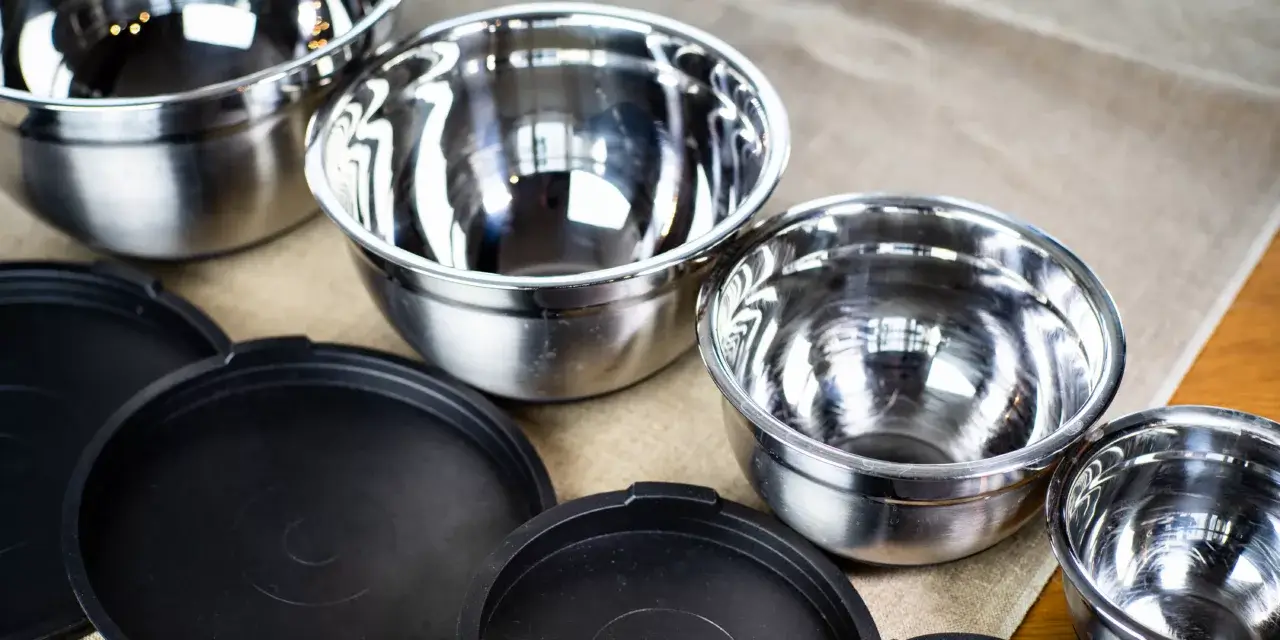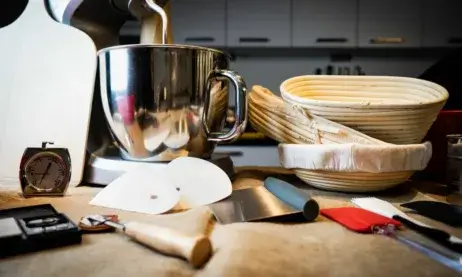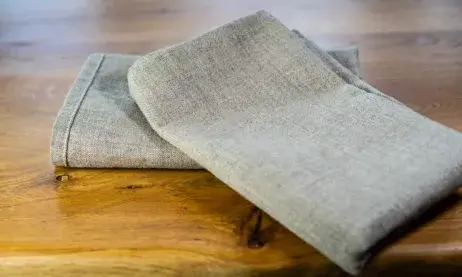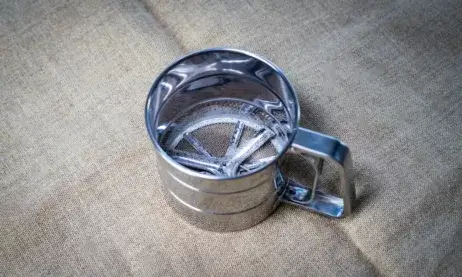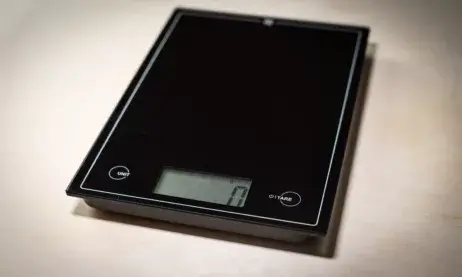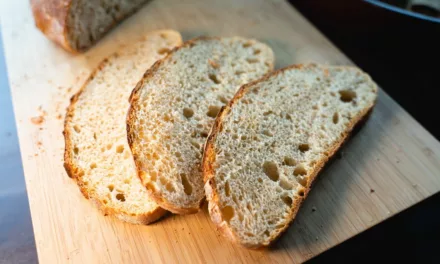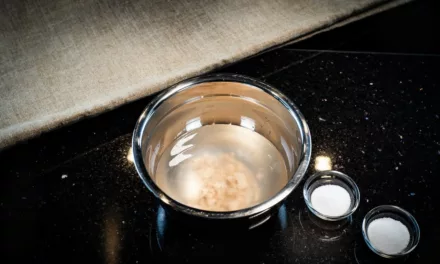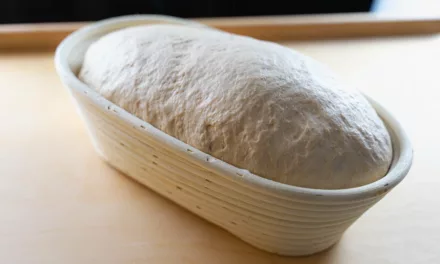Ready to elevate your baking game? This guide is your golden ticket to perfect pastries, starting with the essential – mixing bowls.
Every baker knows the struggle of mixing ingredients in a subpar bowl. But the right mixing bowl can turn that around, making your baking experience as smooth as a well-kneaded dough.
As a seasoned baker, I can tell you this – the right mixing bowl can make a world of difference. It’s not just a container for your ingredients; it’s a tool that can enhance your baking skills.
Dive into this guide and discover the magic of mixing bowls for yourself. By the end of it, you might find yourself looking at your kitchen (and your pastries) in a whole new light. Ready to embark on this culinary adventure?
Table of Contents
- Different Types of Mixing Bowls
- Stainless Steel Mixing Bowls
- Glass Mixing Bowls
- Ceramic Mixing Bowls
- Plastic Mixing Bowls
- Benefits of Using Mixing Bowls for Baking
- Efficient Ingredient Mixing
- Easy Dough Preparation
- Precise Measurements
- Factors to Consider When Choosing Mixing Bowls for Baking
- Size and Capacity
- Material and Construction
- Stability and Grip
- Easy Pouring and Scraping
- Tips for Properly Using Mixing Bowls for Baking
- Sifting Dry Ingredients
- Properly Creaming Butter and Sugar
- Incorporating Wet and Dry Ingredients
- Folding in Delicate Mixtures
- Where to Buy Mixing Bowls
- Conclusion
- Frequently Asked Questions (FAQ)
Different Types of Mixing Bowls
Stainless Steel Mixing Bowls
Stainless steel mixing bowls are highly popular in the baking world. They are known for their durability, resistance to rust, and ease of cleaning. Stainless steel bowls are ideal for tasks like whisking egg whites to stiff peaks or kneading dough, as they provide stability and prevent the mixture from sticking.
Glass Mixing Bowls
Glass mixing bowls offer transparency, allowing you to see the consistency and texture of the ingredients as you mix them. They are non-reactive and do not absorb odors or flavors, ensuring that your batters and doughs maintain their purity. Glass bowls are also suitable for microwave and oven use, making them versatile for both mixing and baking purposes.
Ceramic Mixing Bowls
Ceramic mixing bowls add a touch of charm to your baking routine. They come in various colors and designs, making them a delightful addition to any kitchen. Ceramic bowls retain heat well, providing an ideal environment for yeast doughs to rise. They are also oven-safe, allowing for a smooth transition from mixing to baking.
Plastic Mixing Bowls
Plastic mixing bowls are lightweight, affordable, and widely available. They are practical for everyday baking tasks and are less likely to break compared to other materials. Plastic bowls often come with lids, allowing for easy storage of leftovers or refrigerating doughs for later use.
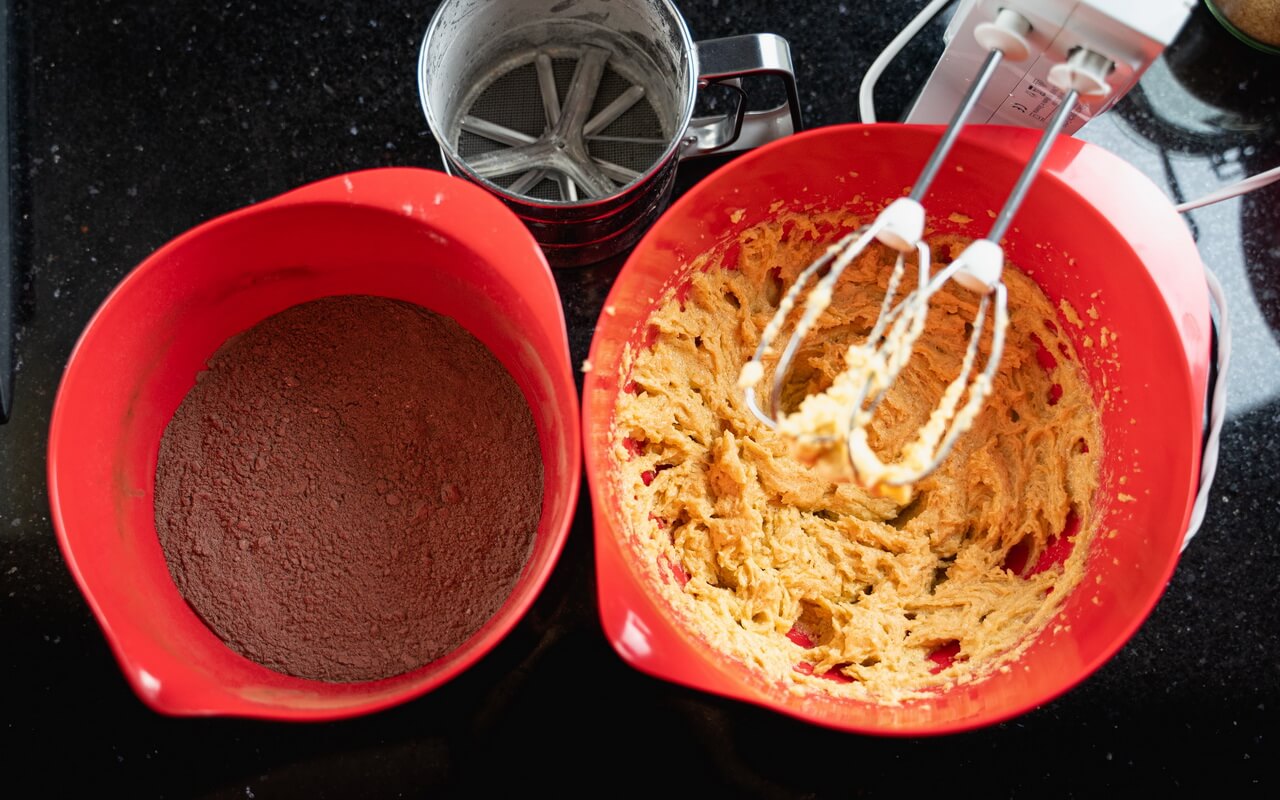
Benefits of Using Mixing Bowls for Baking
Efficient Ingredient Mixing
Mixing bowls provide ample space for combining ingredients thoroughly. Whether you’re creaming butter and sugar or whisking dry and wet ingredients together, the spaciousness of a mixing bowl allows for efficient and consistent mixing, resulting in better texture and flavor in your baked goods.
Easy Dough Preparation
Preparing dough is a fundamental step in baking, and mixing bowls make the process more manageable. Their wide rims provide enough space to incorporate ingredients and knead dough comfortably. Additionally, mixing bowls with high sides prevent ingredients from spilling over, ensuring a cleaner and more organized workspace.
Precise Measurements
Many mixing bowls come with measurement markings on the inside, allowing you to accurately measure ingredients directly in the bowl. This feature eliminates the need for additional measuring cups or spoons, streamlining your baking process and reducing the number of utensils to clean.
Factors to Consider When Choosing Mixing Bowls for Baking
Size and Capacity
Consider the size and capacity of the mixing bowls based on your baking needs. Having a range of sizes, from small to large, allows you to handle different recipes efficiently. Smaller bowls are ideal for whisking eggs or making small batches of frosting, while larger bowls accommodate mixing doughs or cake batters.
Material and Construction
Different materials offer distinct advantages in baking. Stainless steel bowls are durable, resistant to rust, and ideal for tasks requiring stability. Glass bowls allow you to monitor consistency and are safe for microwave and oven use. Ceramic bowls provide aesthetic appeal and retain heat well for yeast doughs. Plastic bowls are lightweight and practical for everyday use.
Stability and Grip
Choose mixing bowls that provide stability while mixing. Bowls with non-slip bases or grips prevent slipping or tipping over, ensuring a smooth and safe baking experience. Stability is especially crucial when working with heavy doughs or using electric mixers.
Easy Pouring and Scraping
Opt for mixing bowls with pouring spouts or a curved lip design. These features facilitate precise pouring of batters into cake pans or muffin tins, reducing the risk of spills and mess. Additionally, bowls with a smooth interior surface make scraping out every last bit of batter or dough effortless.
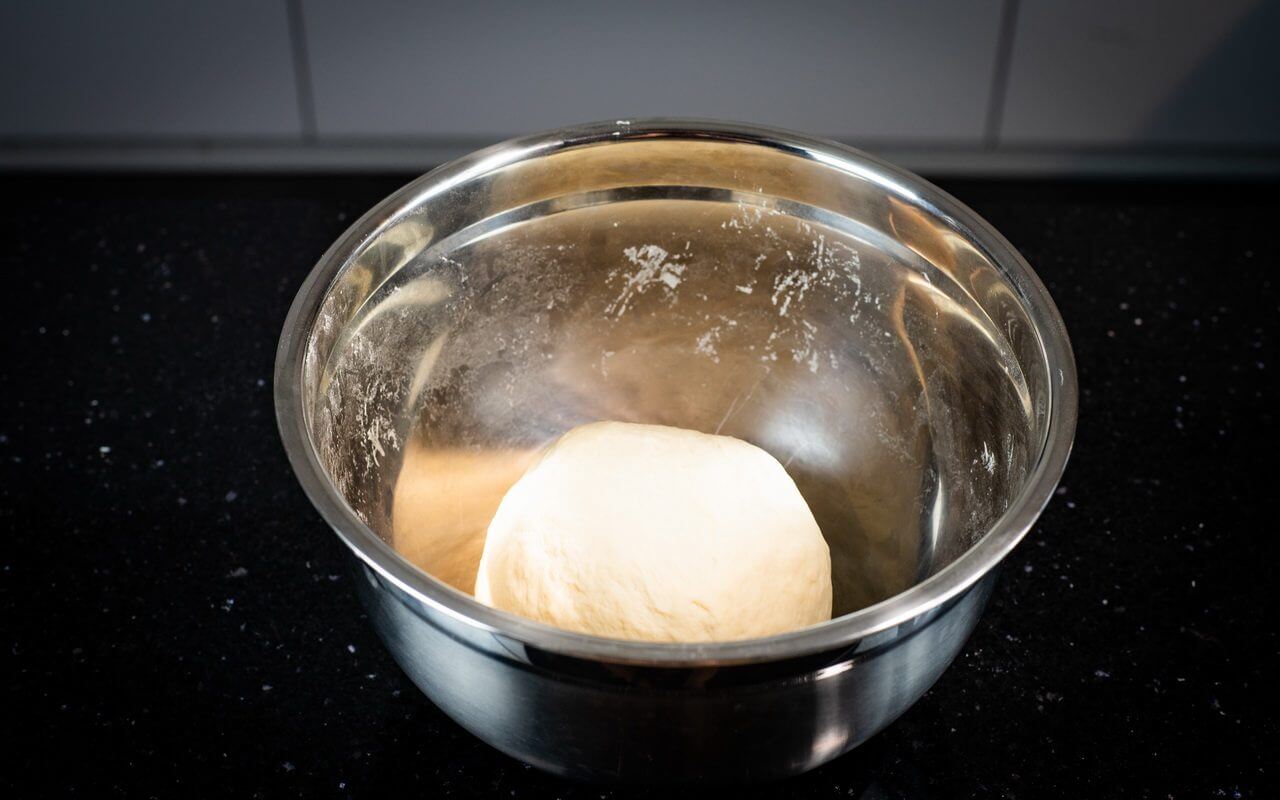
Tips for Properly Using Mixing Bowls for Baking
Sifting Dry Ingredients
Before adding dry ingredients to your mixing bowl, sift them to remove any lumps and ensure uniform distribution. Use a fine-mesh sieve or a sifter to achieve a lighter and fluffier texture in your baked goods.
Properly Creaming Butter and Sugar
For recipes that call for creaming butter and sugar, start with softened butter at room temperature. Place the measured butter and sugar in the mixing bowl and beat them together until light and fluffy, using an electric mixer or a sturdy spatula. This step ensures proper aeration and uniform incorporation of ingredients.
Incorporating Wet and Dry Ingredients
When combining wet and dry ingredients, start by adding the dry ingredients to the mixing bowl. Make a well in the center of the dry ingredients and pour in the wet ingredients gradually. Use a spatula or mixer on low speed to blend the ingredients until just combined. Avoid overmixing, as it can lead to tough or dense baked goods.
Folding in Delicate Mixtures
When folding delicate mixtures, such as beaten egg whites or whipped cream, into the batter, use a spatula and a gentle folding motion. This technique ensures the mixture remains light and airy, preserving the desired texture of your baked goods.
Where to Buy a Mixing Bowls
You can easily purchase a mixing bowls online on Amazon. Look for reliable suppliers that offer high-quality mixing bowls made from the materials of your choice, such as stainless steel, glass, ceramic, or plastic. Consider the dimensions and capacities of the bowls to suit your specific baking needs.
Here are two good sets you can choose from:
No products found.
Conclusion
Mixing bowls are essential tools for achieving perfect pastries in your baking endeavors. Whether you prefer the durability of stainless steel, the transparency of glass, the charm of ceramics, or the practicality of plastic, there is a mixing bowl that suits your needs. Consider factors such as size, material grip when choosing a mixing bowl for baking. These bowls offer benefits such as efficient ingredient mixing, easy dough preparation, and precise measurements. To make the most of your mixing bowls, follow helpful tips for usage, including sifting dry ingredients, properly creaming butter and sugar, incorporating wet and dry ingredients, and folding delicate mixtures.
In conclusion, using the right mixing bowls for baking is essential for achieving perfect pastries. The choice of material, size, stability, and grip plays a crucial role in creating delightful baked goods. Follow the provided tips for proper usage and explore reputable brands to find the ideal mixing bowls for your baking needs.
Frequently Asked Questions (FAQ)
What is the best material for a mixing bowl for baking?
The best material for a mixing bowl for baking depends on personal preference and specific baking needs. Stainless steel, glass, and ceramic are popular choices. Stainless steel bowls are durable, easy to clean, and ideal for tasks requiring stability. Glass bowls offer transparency and are suitable for microwave and oven use. Ceramic bowls add aesthetic appeal and retain heat well. Consider your baking requirements and choose a material that aligns with your preferences.
What is the best bowl to mix bread dough in?
When mixing bread dough, it’s best to use a large, sturdy bowl that can accommodate the size of the dough and allow for proper kneading. Stainless steel or ceramic bowls are commonly recommended for bread dough mixing. Stainless steel bowls offer durability and stability, while ceramic bowls retain heat well, aiding in the dough’s rising process. Choose a bowl with enough depth and capacity to comfortably handle the dough’s size.
What bowls to use for baking?
For baking, it’s essential to use mixing bowls made from materials suitable for the specific baking task. Stainless steel, glass, ceramic, and even high-quality plastic bowls are commonly used. Stainless steel bowls are versatile and can handle various baking tasks. Glass bowls are ideal for tasks requiring transparency, such as monitoring batters or dough consistency. Ceramic bowls add a touch of elegance and retain heat well for yeast doughs. Consider the specific baking needs and select the appropriate bowls accordingly.
Are stainless steel mixing bowls better than plastic?
Stainless steel mixing bowls are favored by many over plastic bowls due to their durability, stability, and versatility. Stainless steel bowls are less prone to scratching, staining, or absorbing odors compared to plastic. They can withstand high temperatures, making them suitable for various baking tasks. Additionally, stainless steel is considered a safer option in terms of potential chemical leaching that may occur with certain types of plastic. However, plastic bowls are lightweight, affordable, and convenient for everyday use. The choice between stainless steel and plastic depends on personal preferences, specific baking needs, and priorities.
Are stainless steel mixing bowls durable for heavy baking tasks?
Yes, stainless steel mixing bowls are known for their durability and can handle heavy baking tasks. They are sturdy and resistant to rust, making them ideal for tasks like kneading dough or mixing thick batters.
Can I use a glass mixing bowl in the oven?
Yes, glass mixing bowls are oven-safe and can withstand high temperatures. However, it’s essential to check the manufacturer’s instructions to ensure the specific bowl you have is suitable for oven use.
Can I use plastic mixing bowls for high-temperature baking?
Plastic mixing bowls have temperature limitations, and not all plastic bowls are suitable for high-temperature baking. It’s crucial to check the manufacturer’s guidelines to determine the maximum temperature they can withstand. For high-temperature baking, it’s generally recommended to use glass or stainless steel bowls.
What is the best size for a mixing bowl for baking cookies?
The best size for a mixing bowl for baking cookies depends on the quantity of dough you typically work with. A medium-sized bowl, around 3 to 4 quarts, is generally suitable for most cookie recipes. However, consider your specific baking needs and choose a size that allows for easy mixing without overcrowding the bowl.
How do I clean and store my baking mixing bowls properly?
Most mixing bowls are dishwasher-safe, but it’s always a good idea to check the manufacturer’s instructions. If handwashing, use warm soapy water and a non-abrasive sponge or cloth. Dry the bowls thoroughly before storing to prevent moisture buildup and potential damage. When storing, consider nesting the bowls or using stackable designs to save space in your kitchen.

